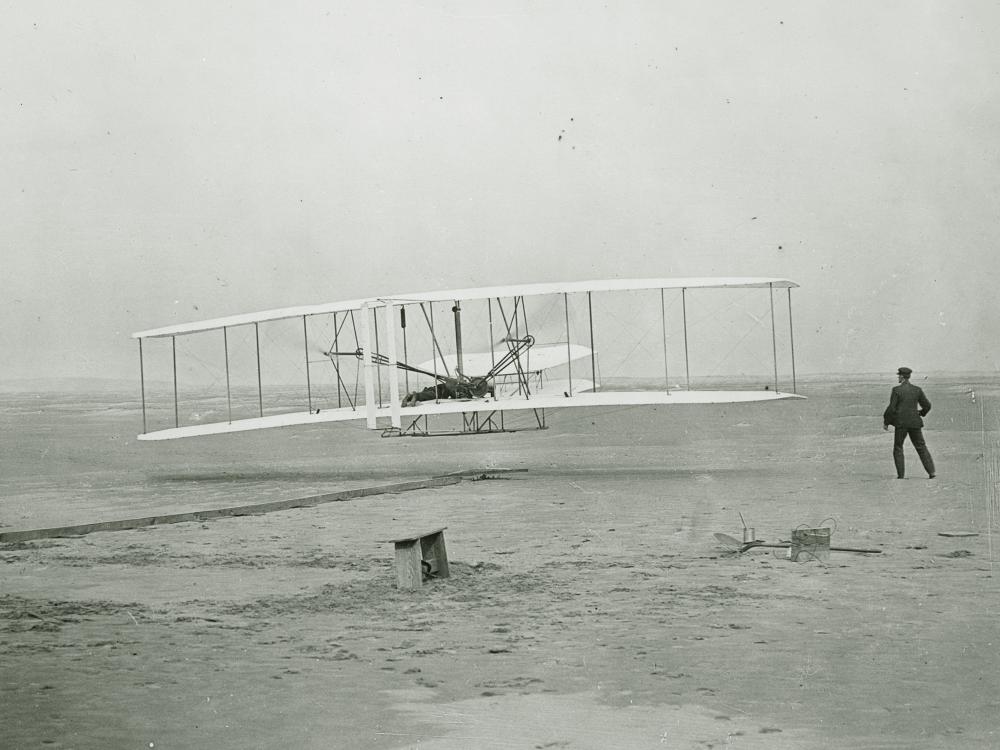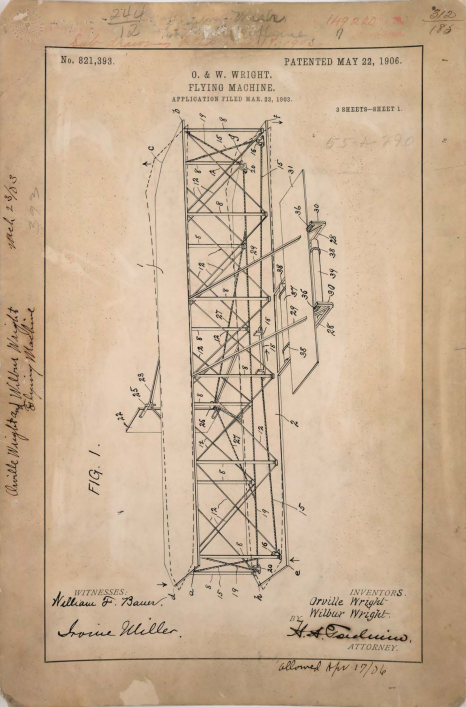On December 17th, 1903, the Wright Flyer took off with Orville Wright at the controls. The Wright Flyer was the first successful heavier-than-air-powered flying machine. That ceremonious first flight lasted 12 seconds and flew about 120 feet. The Wright Flyer flew through freezing temperatures and 25 mph wind. December 17th was the last day they had in Kitty Hawk before returning to Ohio for the winter. This was a turning point because of the opportunity it allowed.
"At just 12 o'clock Will started on the fourth and last trip. The machine started off with its ups and downs as it had before, but by the time he had gone over three or four hundred feet he had it under much better control, and was traveling on a fairly even course... The front rudder frame was badly broken up, but the main frame suffered none at all. The distance over the ground was 852 feet in 59 seconds."
~ Orville Wright in his December 17th, 1903 diary entry

